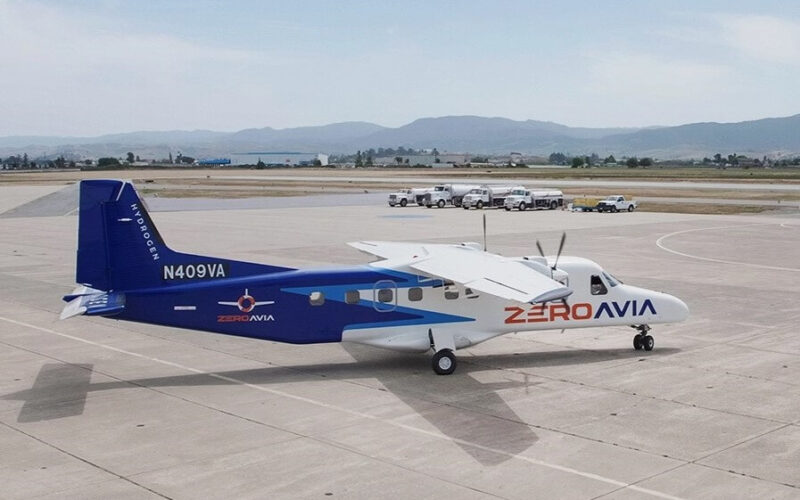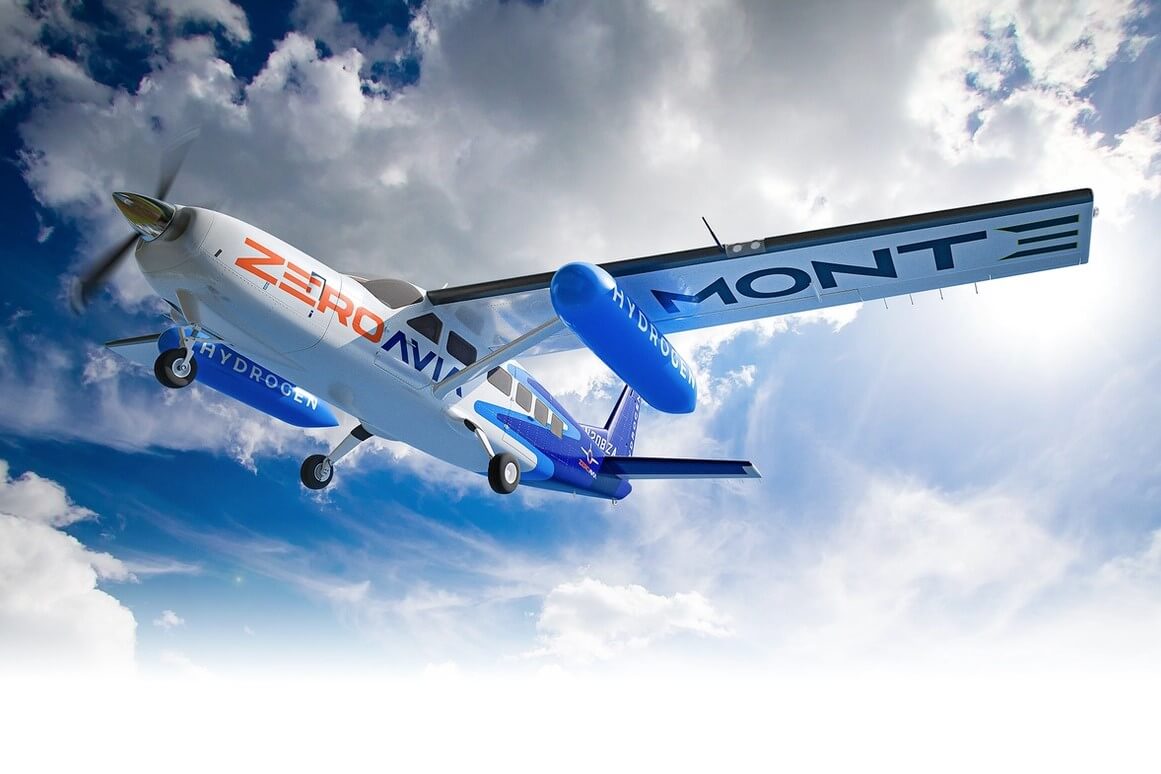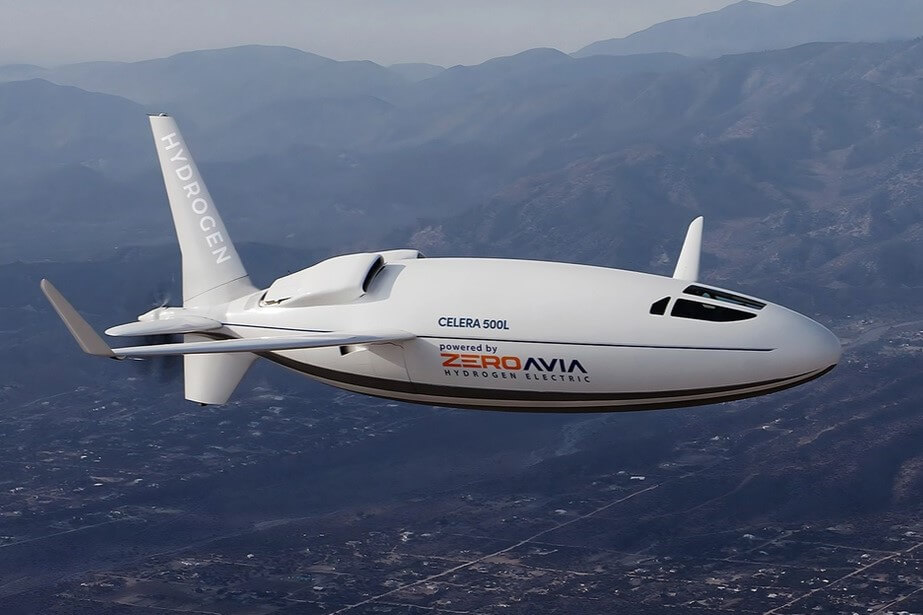Just over a century after the dawn of aviation, are we on the verge of a technology shift in how we power aircraft and make flying more sustainable?
One of the most promising options seems to be hydrogen-electric powertrains for aircraft, with several companies working on this form of zero-emission propulsion, from established manufacturers to start-ups.
AeroTime spoke to James McMicking, head of strategy at British-US company ZeroAvia, at the Berlin ILA airshow to find out when the newcomer hopes to take to the skies with its hydrogen-electric technology.
ZeroAvia was founded in 2018, by Val Miftakhov, a specialist in battery charging technology, who concluded that hydrogen-electric was the only scalable zero emissions technology.
Now, just four years later, the company is preparing to start flight-testing of a Dornier 228 aircraft within the next few weeks, before bringing its product to the market by the end of 2024.
“It’s very ambitious but that’s how we’re progressing things,” McMicking said. “The technology is moving very fast. And we’re pushing very hard with our partners to improve it as well.”
Who will fly it?
For now, ZeroAvia doesn’t have an official launch airline customer for its first product, the ZA600 powertrain. Airlines are interested but are waiting to see, McMicking said.
“There’s a whole family of aircraft for that engine,” McMicking said, adding that the major market for aircraft in the sub-19 seat category is the United States, where there are more such aircraft “buzzing around” than in Europe.
For example, under a recently announced deal with an aircraft lessor, ZeroAvia hopes to bring the powertrain to aircraft such as the Cessna Caravan, DHC-6 Twin Otter, Dornier 228 and HAL-228 aircraft.
Credit: ZeroAvia
Long-term, McMicking believes there is a global opportunity, from Europe and North America to connecting islands in Asia, through to New Zealand and Africa.
Still, while ZeroAvia has signed a series of deals with partners, it’s not an easy process, with many moving parts to juggle. McMicking lists the major challenges as infrastructure, regulation and technology.
Pipelines and refueling trucks
For hydrogen-electric aircraft, it’s not just a question of sticking a new engine on and taking off. The infrastructure needs to be in place to ensure green hydrogen can be supplied to airports.
“We are a powertrain company, but we also have a big stake in making sure the infrastructure works,” McMicking said. “It’s a really interesting challenge to crack. We’re starting with very small quantities, which requires one kind of solution, and at the other end of the timeline, you have huge quantities of liquid hydrogen, which needs a totally different solution.”
One solution is to generate hydrogen on site, using renewable sources such as solar or wind for the electrolyzer and compressors required. The hydrogen can then be brought to the aircraft by a refueling truck. Such a ‘sun-to-fuel’ scheme is how ZeroAvia is fueling its test aircraft in the UK. It has also set up its own landside to airside hydrogen pipeline at its site in the Cotswolds as a small-scale test.
In the future, governments could build hydrogen hubs with much larger electrolyzers, meaning hydrogen could be taken from those and trucked to airfields. Other options are liquifying the hydrogen in one location and then transporting it, or to pipe the gas from a central facility and then liquify it on site.
Breaking down technological barriers
ZeroAvia has opted for the retrofit as a way to bring its technology to market faster, rather than starting from scratch with a clean-sheet design for a whole new aircraft.
However, ZeroAvia is also working with new airframes, having announced a deal with Otto Aviation to optimize fuel cell-powered electric propulsion systems for its novel aircraft design.
The Otto Celera. Credit: ZeroAvia
ZeroAvia is currently working on the ZA600 powertrain, a 600kW system to power commuter aircraft with nine-19 seats. It uses green hydrogen stored onboard in tanks, which is converted to electricity in flight using a fuel cell, which in turn powers electric motors.
McMicking said while going for retrofit is a compromise because you are not developing the airframe to suit the powertrain, it’s more of a commercially interesting proposition. He commented that many commuter aircraft don’t regularly fly the ranges they are designed for, which means ZeroAvia can start by concentrating on smaller ranges and then scale-up the architecture. After the 600KW powertrain with a range of 300 miles, the company plans to move to 2-4 MW, which could provide 1000-mile range in 40-80 seat aircraft by 2026.
“You put the technology into the market, you get it certified, that breaks down barriers to opening up the next generation. And that’s how we accelerate progress,” McMicking said.
For ZeroAvia, the key technological challenge is not a new one – increasing the power density and getting the weight down. “It’s a classic systems engineering problem. You have to optimize all of the bits in the system and with the airframe in mind as well, to get the best results.”
Clamoring to be first
The next big piece of the puzzle is regulation. ZeroAvia is now working with regulators on getting a certifiable configuration for its powerplant and what the means of compliance will be for the fuel cell system.
“We’re working very closely with the CAA to do that now. The feedback from them has been very, very positive about the business,” McMicking said. “These things take time. It’s not just the technology, it’s dependent on regulatory engagement and the industry will want to be involved in commenting.”
Still, McMicking is confident that ZeroAvia is at the forefront of the industry. Others involved in developing hydrogen propulsion technology include Universal Hydrogen, H2Fly and established manufacturers such as GKN and Airbus.
“Everyone’s clamoring to be the first. If anyone’s going to do it, this team will do it. They’ve got the technical know-how and demonstrated the commercial nous to pull together the deals in the ecosystem around the business. We would argue we’re a leader.”



